In the previous section we had an overview of the meeting design framework, and we talked briefly about its components. Here’s a reminder of the framework...
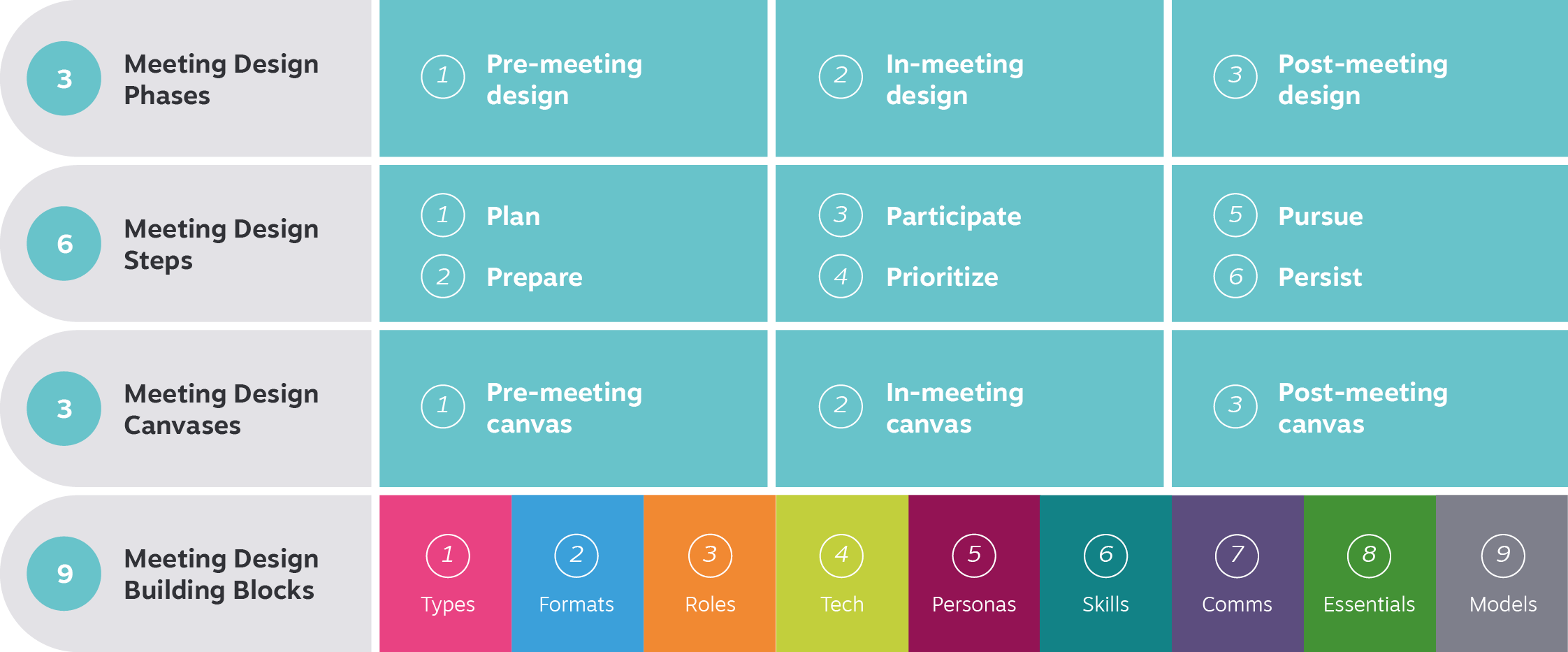
In this section, we’re going to look in more detail at its component parts. We’ll dive into the 6Ps of meeting design; the 3 design canvases; and the 9 better meetings building blocks.
You’ll be able to review these components at your own speed, and think about them in the context of both the meetings that you lead, and those you take part in.
6 Ps of Meeting Design
So, let’s start with the 6Ps of Meeting Design. Remember, we break meeting design down into 3 phases. That’s pre-meeting; in-meeting; and post-meeting design. As we discussed previously, there are 6Ps in total; 2Ps in each of the phases.
The 6Ps help you to consider what needs to be included, at specific points, in your design process. Take a few moments to review the 6Ps card.
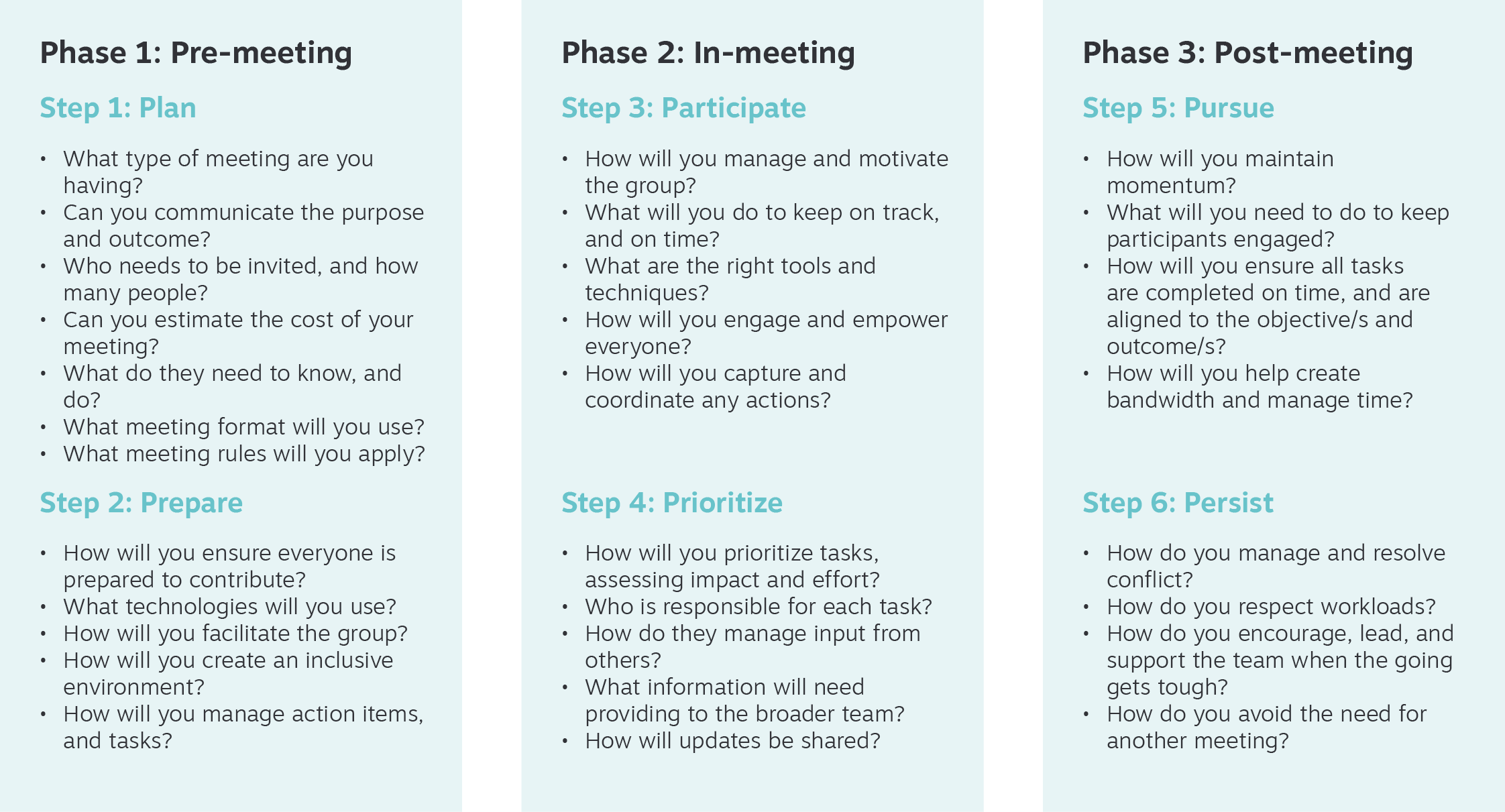
The 6 Ps: Plan, Prepare, Participate, Prioritize, Pursue, Persist.
Meeting Design Canvases
Next, we have the 3 meeting design canvases. There’s a specific canvas for each phase of the meeting design process.
A well-designed meeting removes uncertainty, simplifies complexity, and eliminates ambiguity for everyone involved in the meeting.
Canvas 1 is for your pre-meeting design. It’s a tool to help you capture the design elements required to support the first 2 Ps: Plan and Prepare.
You need to give the people you invite to your meeting the opportunity to get ready to participate. They need to know why they’re invited, and what they need to do to prepare, ahead of the meeting.
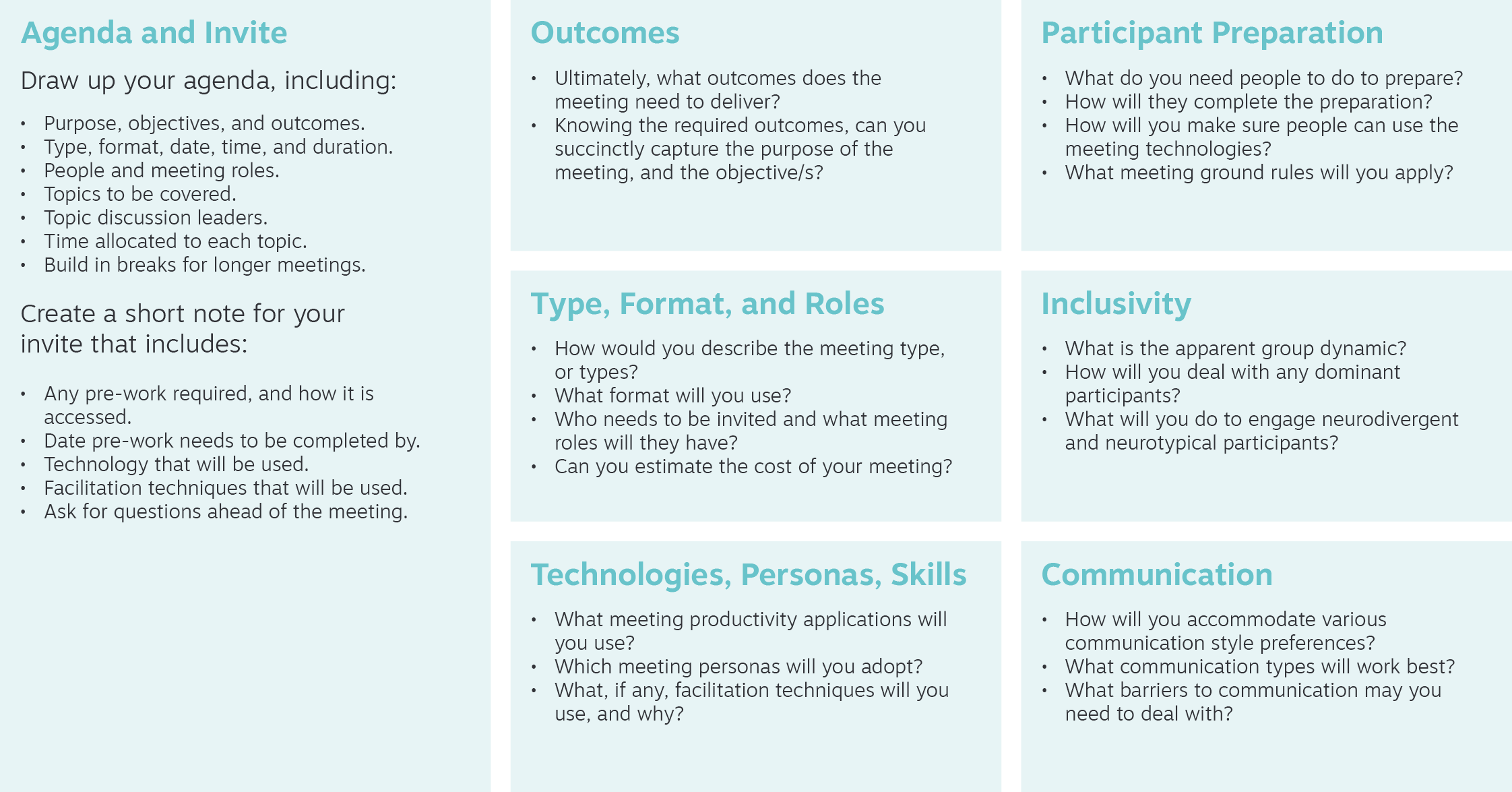
Meeting Design Canvas 1
Canvas 2 is for your in-meeting design. It’s focused on Ps 3 and 4: Participate and Prioritize. It builds out from canvas 1. Meetings should be valuable activities; stuff should get done. That isn’t always the case.
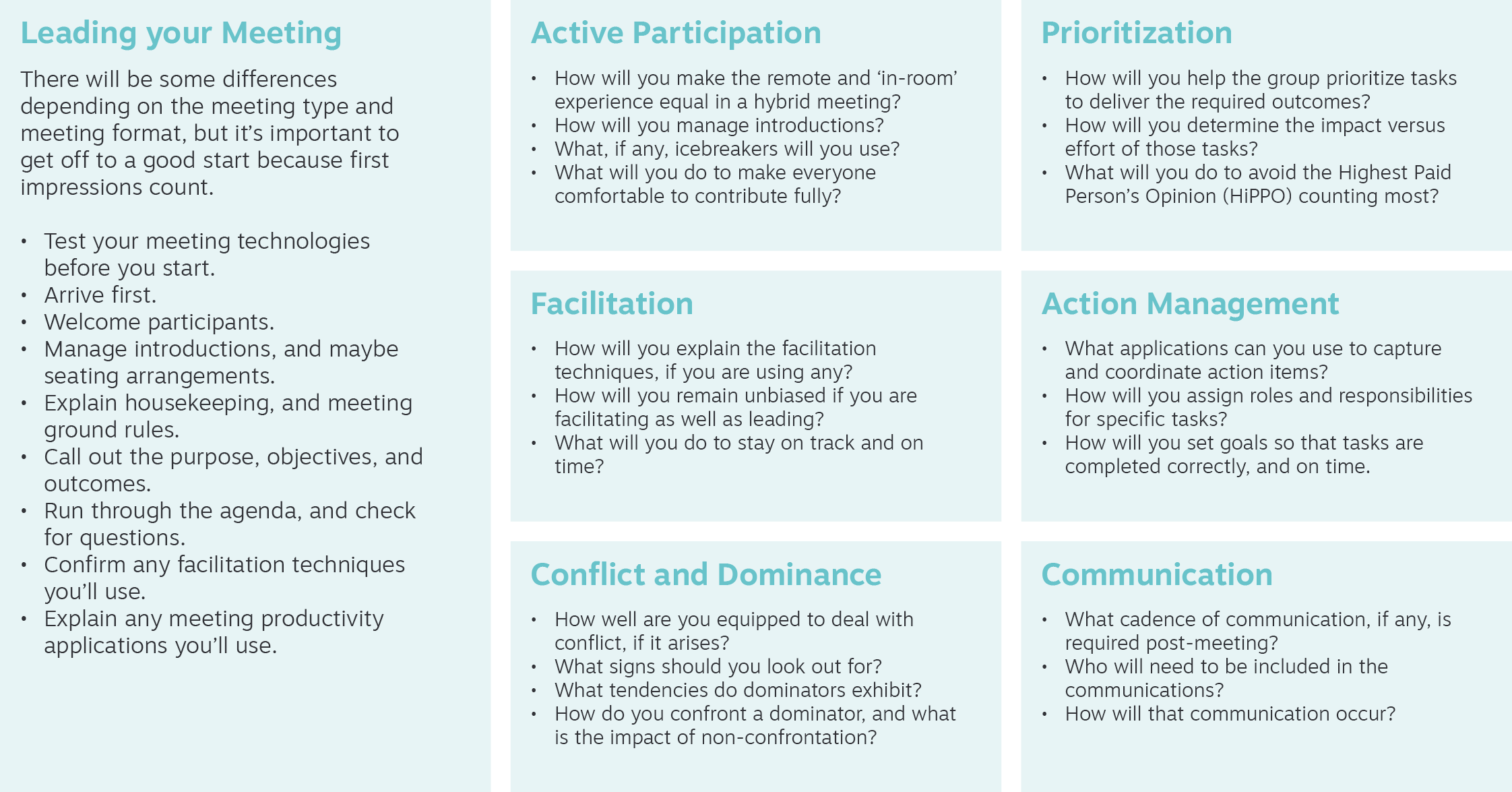
Meeting Design Canvas 2
And finally, Canvas 3 supports your post-meeting design. It helps capture your design elements for Ps 5 and 6: Pursue and Persist.
Remember what we said previously. After the meeting, we need to make sure that we don’t all just walk away, and nothing gets accomplished. That’s quite common. It’s a complete waste of time and money.
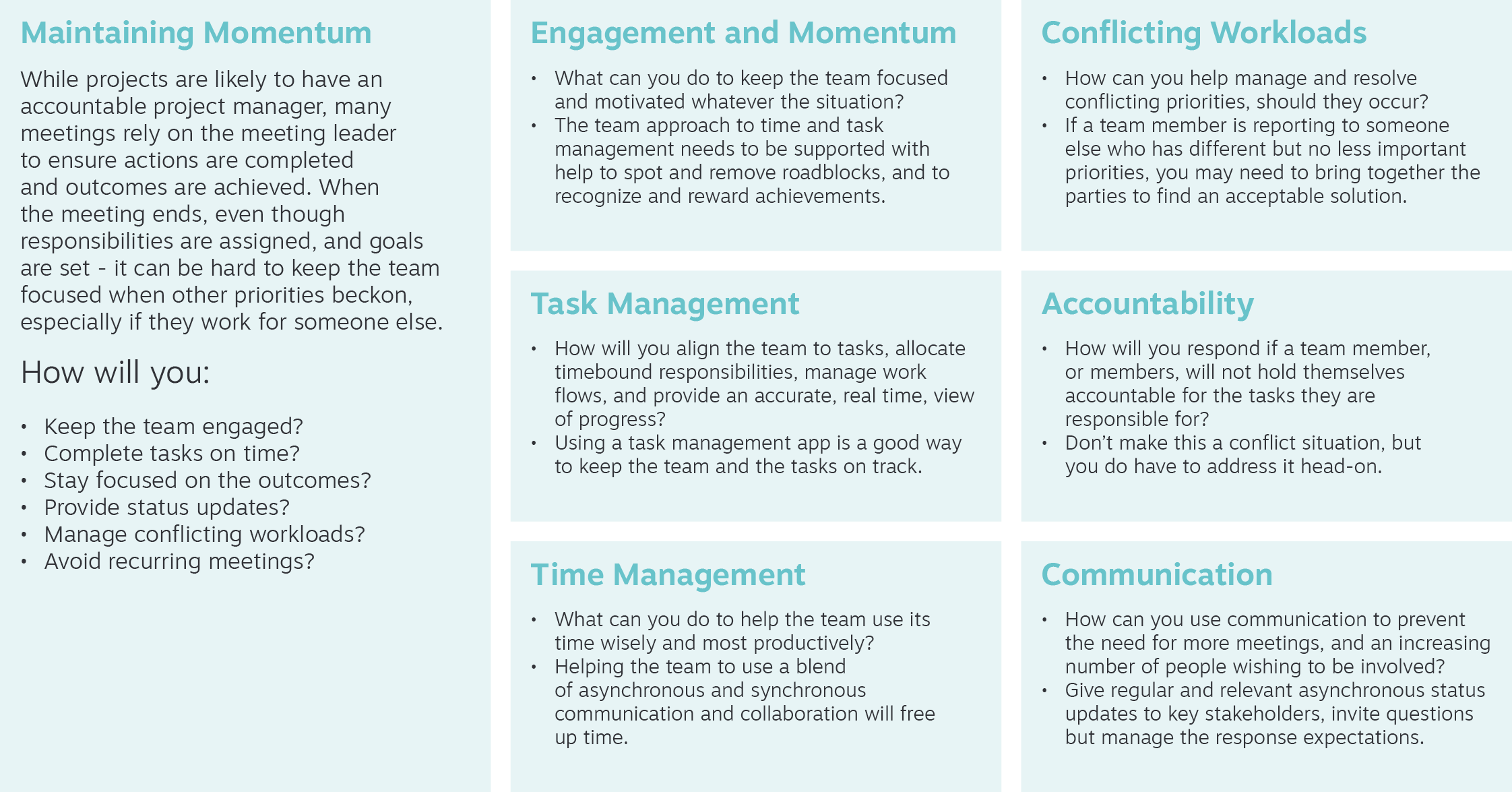
Meeting Design Canvas 3
The 3 canvases support your end-to-end meeting design process, from well-defined objectives to the required outcomes. You can download the 3 canvas templates here.
Meeting Design Building Blocks
And the final components within the framework are the 9 meeting design building blocks. You’ll select and sequence the relevant cards from these building blocks, to help build out your design canvases. They are used in the context of the type of meeting you’re having, its format, and the outcomes that are required.
Click on the individual building blocks to find out a little bit more about each block.
The first 4 blocks are core to any meeting. We call these the Core 4: Meeting Types, Meeting Formats, Meeting Roles, and Meeting Technologies. Click each tile to reveal...
Meeting Types
There are six main meeting types: problem solving, information sharing, ideating, decision making, status updating, or team building? Often a combination of types.
Meeting Formats
What's the right blend of asynchronous communication to get things done efficiently and effectively? What are the considerations for in-person, remote, or hybrid?
Meeting Roles
Understand the six main meeting roles that individuals may have to fulfil in a meeting. Ensure that everyone, whatever their role, is prepared, able and willing to contribute as required.
Meeting Technologies
Technology and meetings go hand-in-hand. The majority of organizations have a preferred meeting platform, but don't tend to specify any specialist meeting productivity applications.
These 5 blocks help you develop, and refine, your meeting design: Meeting Leader Personas, Meeting Skills, Meeting Communications, Meeting Essentials, and Meeting Models. Click each tile to reveal...
Meeting Leader Personas
There are six meeting leader personas that describe the role characteristics, or attributes, that a meeting leader might need to assume during the three main meeting phases.
Meeting Skills
It’s important to develop the skills necessary to help realize your meeting outcomes. This includes understanding and solving problems, making decisions, and action management.
Meeting Communications
Understanding how communication happens, and our own, and others’, styles and preferences helps to avoid miscommunication and misunderstanding.
Meeting Essentials
A selection of proven tips, techniques, and recommended best practice to help guide you on your better meetings journey.
Meeting Models
From your own personal brand and professional presence to team trust, culture, and group dynamics. These insights will help you move beyond the basics of meeting design.
We’ve discussed the need to be able to clearly articulate your meeting’s purpose, objectives and the required outcomes, so that’s what we’ll take a look at next.